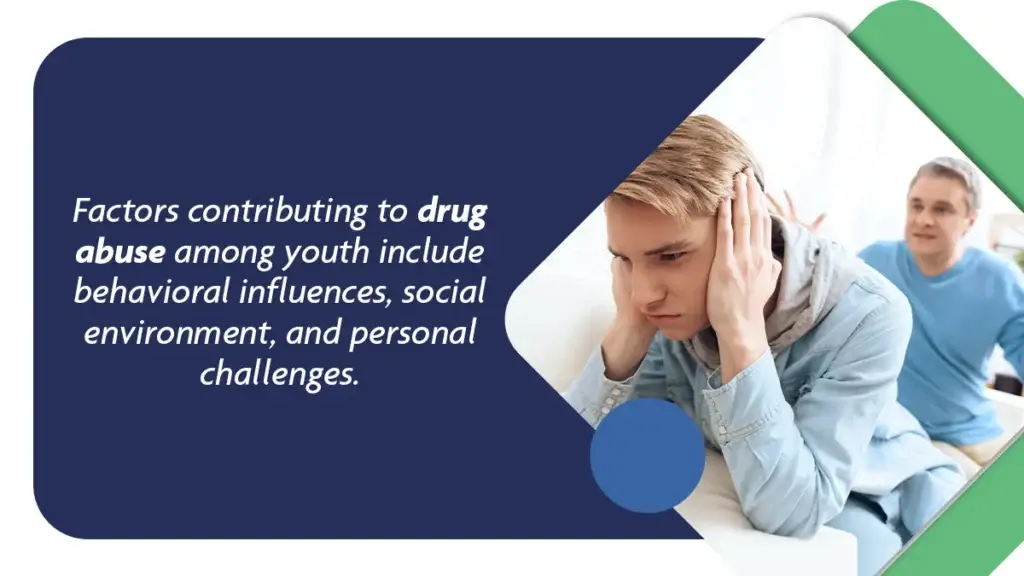
Youth at Risk: The Alarming Issue of Drug Addiction
Drug Addiction among Youngsters in Himachal Pradesh
Himachal Pradesh, renowned for its breathtaking landscapes, peaceful environment, and cultural richness, is currently grappling with a hidden but rapidly growing crisis—the issue of drug addiction among the youth. What was once considered a challenge primarily faced by urban centers and border states like Punjab has now permeated into the serene valleys, remote villages, and bustling towns of Himachal.
The harsh reality is that young individuals, including school-going children, are increasingly falling prey to the lure of harmful substances like synthetic heroin (locally called chitta), cannabis, and prescription opioids. What might begin as casual experimentation or peer influence quickly escalates into addiction, robbing children of their future and tearing families apart.
Drug addiction is not just a personal affliction—it has evolved into a widespread social threat, impacting family dynamics, overwhelming the healthcare infrastructure, clogging the legal system, and weakening the social fabric of communities. This blog aims not only to highlight the gravity of this crisis but also to educate, inform, and encourage unified action across all levels of society.
The Rising Menace in Numbers

In recent years, Himachal Pradesh has witnessed a sharp and deeply concerning increase in drug-related cases, particularly involving young individuals. According to recent data released by the Himachal Pradesh Police, 597 NDPS (Narcotic Drugs and Psychotropic Substances) cases were registered in the first three months of 2025 alone—a 29% increase compared to the same period in 2024.
Alarmingly, heroin (chitta) alone accounted for over 305 individual seizures during this period. This indicates the growing popularity and availability of synthetic drugs, even in rural regions and small towns that were once considered safe from such urban problems.
| District | NDPS Cases | % of Total Cases |
|---|---|---|
| Shimla | 51 | 8.5% |
| Mandi | 42 | 7.0% |
| Kangra | 36 | 6.0% |
| Bilaspur | 32 | 5.4% |
| Una | 23 | 3.9% |
| Sirmaur | 23 | 3.9% |
| Hamirpur | 19 | 3.2% |
| Kullu | 19 | 3.2% |
| Nurpur | 17 | 2.8% |
| Solan | 17 | 2.8% |
| Chamba | 11 | 1.8% |
| Baddi | 11 | 1.8% |
| Dehra | 4 | 0.7% |
| Others | 212 | 35.5% |
| Total | 597 | 100% |
These figures clearly underscore that drug abuse is no longer limited to cities. Even less populated districts like Hamirpur, Solan, and Dehra are reporting a rise in NDPS cases. The alarming number of cases listed under “Others” reveals that the problem is wide and deeply rooted.
Why Are Youth at Risk?

1. Easy Access to Drugs
The easy and widespread availability of narcotic substances is one of the most dangerous aspects of this crisis. Students across the state report being able to procure drugs like heroin, marijuana, and synthetic opioids within walking distance of their schools, tuition centers, and hostels. Local dealers operate unchecked in areas that should ideally be safe for young minds.
2. Peer Pressure and Curiosity
Teenagers are especially vulnerable to influence from their peers. Many begin experimenting with substances simply to “fit in” or out of curiosity. Social media plays a negative role here, often glamorizing drug use, presenting it as a lifestyle trend rather than a harmful addiction.
3. Mental Health & Family Problems
Many young individuals face unaddressed emotional trauma, parental neglect, or academic stress. In the absence of mental health support, they may use substances as a coping mechanism, further complicating their physical and emotional well-being.
4. Lack of Awareness
A significant number of teenagers are unaware of the devastating consequences of addiction. They believe they can “try it once” and stop anytime. Sadly, even a single exposure to synthetic drugs like chitta can lead to irreversible harm and a lifetime of dependency.
The Issue of “Chitta”

“Chitta” is a street name for synthetic heroin, a dangerously addictive and toxic drug that has become increasingly common across Himachal. Just a few milligrams of chitta can cause an overdose, and repeated use leads to severe physical and mental deterioration.
In 2025, chitta accounted for over half of all drug seizures in the state. It has become the most threatening drug because of several reasons:
- Affordable for youth with limited money
- Highly addictive, leading to repeated use within days
- Easily available in local markets and near educational institutions
- Devastating effects on internal organs, nervous system, and cognitive ability
The use of chitta leads to an alarming increase in overdose deaths, permanent health damage, and increased criminal behavior among youth.
Criminal Justice Overwhelmed

- Overloaded Courts
As of early 2025, over 9,400 drug-related cases were pending in Himachal Pradesh’s courts. The conviction rate remains at a low 27%, hindered by delayed lab reports, weak investigation processes, and limited legal resources.
- Overcrowded Prisons
Prisons across the state are struggling to manage the load. Around 40–45% of inmates are currently facing charges under the NDPS Act, most of whom are first-time offenders or addicts in need of rehabilitation—not punishment. This shift highlights the need for reform in legal strategy, emphasizing treatment over incarceration.
Over 40% Of Total Inmates In Himachal Jails Booked Under Drug Charges
Impact on Health and Society
1. Physical Health
Drug addiction causes irreversible damage to vital organs. Heroin and other injected substances raise the risk of HIV/AIDS, Hepatitis B and C, and serious damage to the brain, lungs, and liver. Chronic users often suffer from malnutrition, infections, and deteriorating physical health.
2. Mental Health
Addicted youth often experience severe anxiety, deep depression, hallucinations, and even suicidal thoughts. Aggressive behavior, paranoia, and emotional numbness are also commonly reported among habitual users.
3. Social Problems
The fallout of addiction is felt across communities—school dropouts, rising unemployment, petty crimes, violence within families, and increasing numbers of homeless youth all point to the devastating social cost of drug addiction.
Role of Families, Schools & Community
1. Parental Awareness
Early detection can prevent full-blown addiction. Parents should be alert to signs like frequent mood changes, isolation, lack of interest in school, unexplained money issues, and new secretive friend circles.
2. School Involvement
Educational institutions play a critical preventive role. Regular initiatives like:
- Monthly awareness seminars
- Confidential counseling sessions
- Student-led anti-drug committees
can significantly reduce the number of new addicts among school and college students.
3. Community Responsibility
Villages and neighborhood communities must form local monitoring groups that keep an eye on suspicious activity near bus stands, parks, and school peripheries—common hotspots for drug peddling.
Prevention Is Better Than Cure
How to Prevent Drug Use in Youth:
- Talk Early and Openly: Begin conversations about the dangers of drugs from Class 5 onwards in an age-appropriate and honest way.
- Promote Extracurricular Involvement: Encourage participation in sports, music, arts, and life-skill programs to keep youth engaged and purpose-driven.
- Monitor Online Activity: Parents should regularly check their child’s online habits, social media trends, and content consumption.
- Mentor Programs: Implement peer mentorship systems where senior students offer support, guidance, and accountability to juniors.
- Helpline Networks: Set up anonymous, district-level helplines for youth to ask for help without fear or stigma.
Rehabilitation and the Way Forward
Recovery is not only possible—it’s happening.
- Government hospitals in Shimla, Mandi, and Dharamshala now offer de-addiction and psychiatric treatment.
- NGOs and civil society are stepping in with group therapy, job training, emotional support, and family counseling.
- But more needs to be done—greater funding, more rehab centers, and awareness campaigns are crucial for long-term impact.
We must remember that addiction is not a moral failing—it’s a medical issue. With empathy, early intervention, and consistent support, we can save lives and rebuild futures.
Say no to drugs—not because you’re told to, but because you deserve a better life.
Frequently Asked Questions (FAQs)
1. Why is drug use increasing among youth in Himachal?
Due to easy access to drugs, peer pressure, unemployment, lack of awareness, and stress from family or academic pressures.
2. Which drug is the most common?
Currently, chitta (synthetic heroin) is the most common and dangerous substance being used.
3. Are school students using drugs?
Yes. Reports confirm drug use among students as young as 13 or 14 years old, especially cannabis and synthetic drugs.
4. What are early signs of drug use in children?
Behavioral changes like secrecy, irritability, declining grades, avoiding family, and sudden change in friends.
5. What health problems can drugs cause?
Serious physical issues like liver failure, brain damage, mental illness, and in many cases, death from overdose.
6. What is the punishment under the NDPS Act?
Punishment varies based on drug quantity and type—ranging from 6 months to 20 years of imprisonment.
7. What is the conviction rate in Himachal?
As of early 2025, the conviction rate for drug cases in Himachal stands at approximately 27%.
8. Are there any helplines or support centers?
Yes, all district hospitals have de-addiction centres, and NGOs provide phone counseling and community support.
9. How can schools prevent drug addiction?
By providing early education, regular workshops, peer mentorship, and confidential counseling services.
10. Can an addict recover completely?
Yes. With early medical treatment, family support, therapy, and rehabilitation, full recovery is very much possible.
Conclusion : Issue of Drug Addiction
The rising tide of drug addiction among the youth of Himachal Pradesh is a wake-up call that demands urgent and united action. What once seemed like a distant problem is now deeply rooted in the heart of our hills, affecting children, families, and entire communities. From the alarming rise in “chitta” use to the overwhelmed legal and healthcare systems, the crisis is real—but it is not insurmountable.
We must remember that addiction is not a personal failure—it is a complex issue driven by social, emotional, and systemic factors. The solution lies not in punishment alone, but in education, early intervention, strong family and school support systems, community vigilance, and accessible rehabilitation.
Every parent, teacher, student, law enforcer, and citizen has a role to play in saving our youth. If we choose silence, we allow the problem to grow; if we choose action, we give our next generation the chance to rise, dream, and live free of the shadows of addiction.
Let us come together to create a Himachal Pradesh where young minds flourish—not fall—where health triumphs over habit, and where awareness replaces ignorance. The time to act is now, because every life saved today becomes a foundation for a stronger tomorrow.










